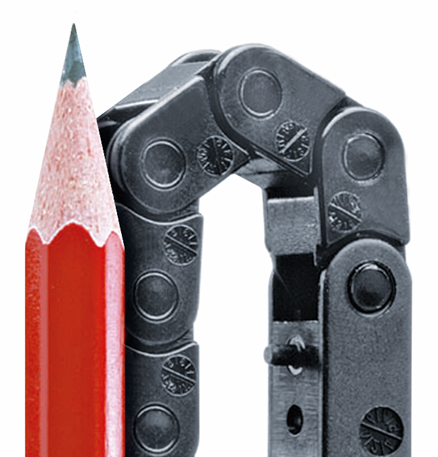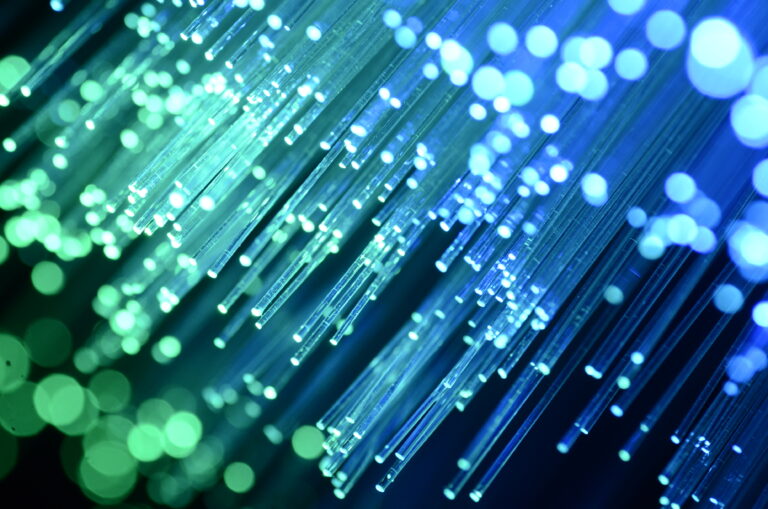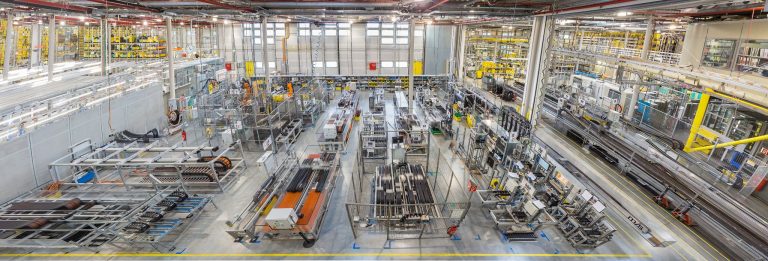Can fibre optic cable be the solution for small bend radii?
igu-blog-adm | 23. February 2022
Industry 4.0 has now found its way into very many applications. Data is collected at a wide variety of points and must be conveyed to the control system. Used here among other things are our chainflex cables. But when is fibre optic cable the right solution? And can fibre optic cable be used with small bend radii? We would like to take a closer look at that today.
Challenge
In a customer application, bus cables with copper cores were used for years. The challenge was to guide data from a bus system through an application where not only a very small bend radius but at the same time a very large number of double strokes had to be planned. The bus cable used up to now quickly reached its limits here. It was therefore necessary to find out whether the chainflex® fibre optic cables were better suited for the application.

How copper cables reach their limits
Copper was the first metal used by man. Its history goes back a long way, and tools and weapons were already being made in Egypt as early as 4000 BC. The company igus has been manufacturing cables with copper cores since 1989. The cables and thus also the copper wires are exposed to constant movements and thus high stress. Our chainflex cables can withstand these demands thanks to their unique design and the selection of materials specially adapted to the movement. We guarantee this with a service life guarantee, which is due to numerous tests in our test laboratory and decades of experience.
But then where are the disadvantages of copper cables? In most cases, you might suspect that the biggest problem comes from the copper wires in the core breaking due to the high bending stress. However, this is not the only and biggest problem. In the case of bus cables, electrical values defined by the respective bus system also influence the functionality of the cable. The easiest way to think of this is in terms of capacitance. The capacitance is an electrical value which plays a very important role in a bus cable. This value can change, among other things, due to a material constant, but also due to distances, e.g., the distance between two pairs of cores. In the case of very high bending stress, as we found in the customer’s application, the distances between the cores can therefore change and the capacitance value of the cable can change as a result. This has the consequence that the defined bus signal can no longer be transmitted. Therefore, we have been looking for an alternative to offer our customer.

Advantages with fibre optic cables
In most cases, so-called fibre optic cables are used to transmit data over a particularly long distance. Just think about your internet connection. Here you achieve the best result with a fibre optic connection, since the losses over the long distance are very low. In this application, we no longer speak of cores and stranded wires, but of fibres. These fibres are made of either plastic or glass and transmit data by means of a light signal.

In addition to the good transmission properties, a fibre optic cable also has very good specifications for permanent bending stresses, e.g. in the energy chain. By using fibre optic cables, a reduction of the min. bend radius by up to 40% is achieved. In addition, data can be transmitted faster than with conventional copper cables and is not affected by EMC interference. In comparison to a bus cable with copper wires, the fibre optic cable has another advantage. Here the bus signal is not dependent on electrical specifications of the cable. In very simple terms, there are only two fibres here. One enables the signal to be sent as a light pulse from the transmitter to the receiver. The second fibre allows the light signal to go back from the receiver to the transmitter. The distance between these fibres has no influence on the result.
We have proven this together with our customer through tests with our fibre optic cable CFLG.LB . The result was astounding: the cable lasts several million cycles in this particular application and thus has a significantly longer service life than a comparative cable with copper cores.

How igus improves products through individual customer tests
At igus®, we work with you to conduct individual customer tests tailored to your application in our own chainflex® test laboratory. On more than 3,500m² of floor area, there are a number of test setups for our energy chains where tests are run every day. Whether linear or torsion, short or long travel, small or large bend radius: we at igus® also perform tests for you that go beyond any standards and find the right solution for your application.

Cables are not the same, and one application is not the same as another application. The interaction of all components is always important. Therefore, it is important to take into account all the conditions when choosing the right cable. We are specialists in this field and would like to share our experience of the past years with you.
Test with us!
Do you also have applications where the previous copper cables have reached their limits or data can no longer be transmitted reliably? Then make an appointment now with your igus contact person and we will check whether a chainflex fibre optic cable is the alternative with a significantly higher service life expectancy.

